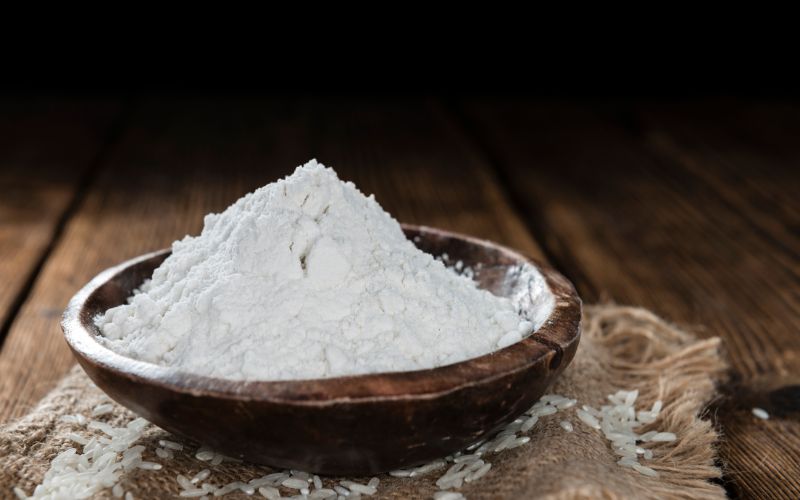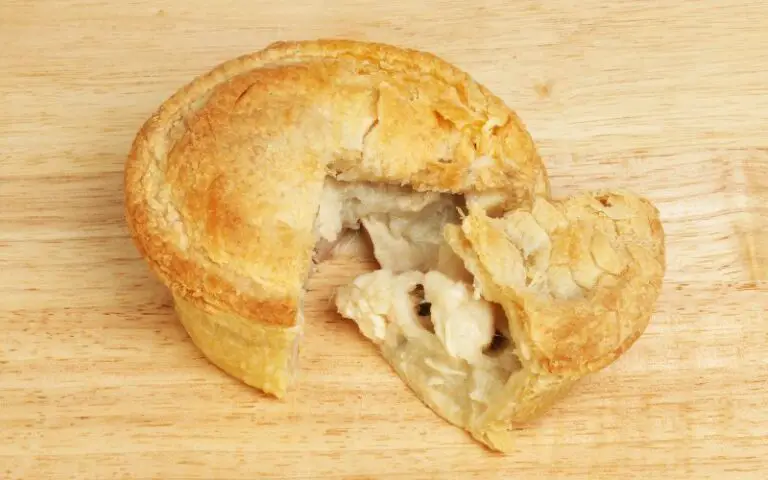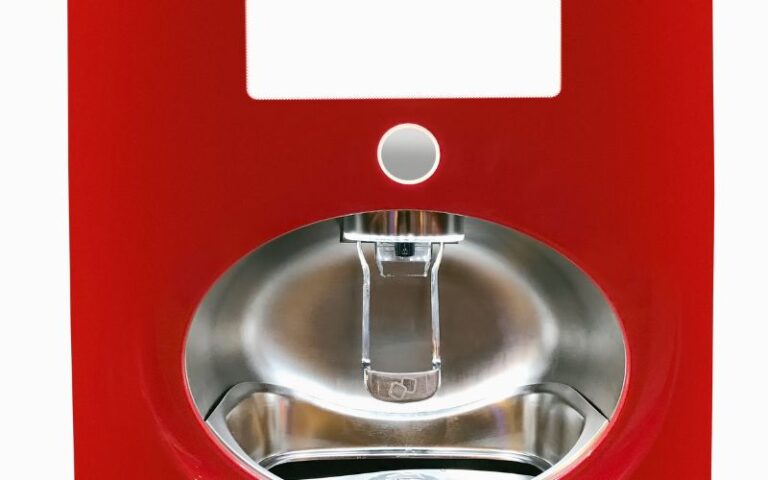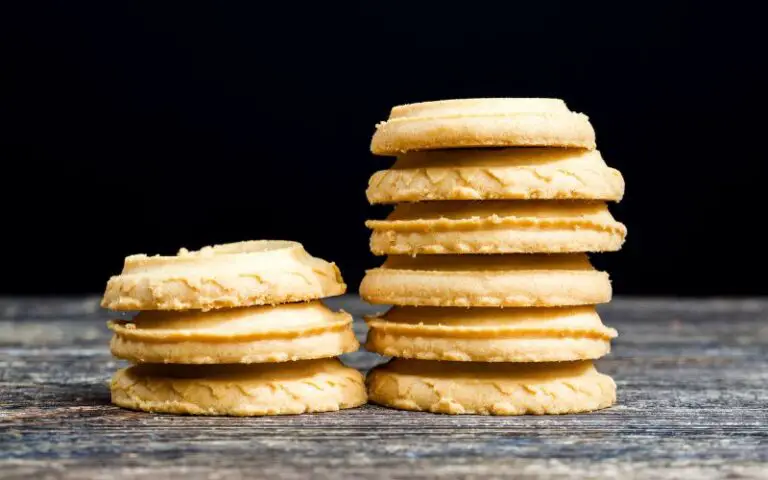Can I Use Bread Flour for Pizza Dough? (Must Know)
Nothing beats the satisfaction of baking homemade pizza right in your kitchen!
With the plethora of pizza dough recipes flooding the internet, you might ask, “Can I use bread flour for pizza dough?”
This is an important question, as its answer holds the secret to a perfectly crusty homemade pizza!
From yeast and types of flour for pizza dough to high protein flours for baking— let’s unlock this crusty secret together.
Yes, you can. Bread flour has more protein content, making more people lean towards it in pizza. It is also always readily available as compared to other complex flour options. Using bread flour for pizza dough has many benefits, such as higher protein content and gluten strength.
This article contains in-depth information on all you need to know about using bread flour for your pizza crust and getting the perfect crust.
The Superiority of Bread Flour in Pizza Making

Making a perfect pizza dough recipe at home involves choosing the right ingredients.
In many homemade pizza dough recipes, one primary ingredient stands out – bread flour. So why do most pros lean toward it?
Protein Content: The Secret to a Chewy Crust
Bread flour boasts a higher protein content than many other flour types for pizza dough.
This high-protein property fuels the formation of more gluten, resulting in a chewy and robust pizza crust with bread flour.
- Better Texture: The extra protein gives your homemade pizza the desired chewiness, making bread flour superior for creating hearty pizzas.
- Versatility: It’s not just about thick crusts! If you love thin-crust pizzas, bread flour can also deliver an amazingly crispy exterior.
But what if you are unable to get hold of this magical ingredient?
All-purpose Flour as an Alternative
If you run out of bread or cannot find it anywhere, don’t fret! You can replace it with all-purpose flour in your pizza dough recipe.
However, remember that your end product might be slightly less dense and chewy due to the difference between the gluten content of the bread and all-purpose flour.
However, using yeast for pizza dough, then kneading well and allowing sufficient time for rising before baking your homemade masterpiece compensates greatly!
Or are you more into Italian-style pizzas?
The Italian Touch: 00 Flour
00 Flour is another option worth considering when baking pizzas at home. With a low-gluten profile yet finely ground texture – it’s ideal for achieving those thin yet soft Italian-style pizzas.
Your choice of flour for pizza dough depends on your preferred crust type, be it chewy, thick crusts with bread flour or a thin, crispy delight.
Using bread flour in recipes, especially for pizza making, offers numerous benefits and makes baking pizza at home an exciting culinary adventure.
Substituting Bread Flour with All-purpose Flour for Pizza Dough
For those who enjoy making their homemade pizza dough, you might often follow a classic pizza dough recipe for bread flour.
However, have you ever considered using all-purpose flour instead?
Difference Between Bread Flour and All-Purpose Flour
Although bread flour is the top choice for making pizza due to its higher protein content, all-purpose flour can be an equally solid pick.
The main difference between bread flour and all-purpose is the protein content: bread flour contains more.
This extra protein produces more gluten, which provides that irresistible chewy texture in your finished product.
Below is a table comparing bread and all-purpose flour:
| Characteristic | Bread Flour | All-Purpose Flour |
|---|---|---|
| Protein Content | Higher (typically 12-14%) | Moderate (around 10-12%) |
| Gluten Strength | High | Moderate |
| Best for Bread Making | Yes | Yes (but less ideal) |
| Ideal for Pastries | Not recommended | Yes |
| Bread Texture | Chewy, dense | Softer, lighter |
| Common Uses | Bread, pizza dough, bagels | Cakes, cookies, muffins |
| Gluten Development | Strong | Weaker |
| Flour Substitution | Can substitute for AP flour in bread recipes with adjustments | It can be used in most recipes as a general-purpose flour |
| Availability | Available but less common | Widely available |
Making Pizza Dough with All-Purpose Flour
When substituting bread flour with all-purpose in your pizza dough recipe, expect a slightly less chewy and dense crust than what you’d get from using bread.
This is because all-purpose has less gluten than bread does. Nevertheless, it can still yield delicious results.
The Effect on Yeast in Your Pizza Dough Recipe
When baking pizza at home, yeast plays a vital role regardless of whether you’re using high-protein flour.
It interacts with the sugars in the dough, resulting in fermentation, which gives rise to bubbles – creating our desired lightness and volume!
Your Personal Preference Matters
Ultimately, your final decision should depend on personal preference – Do you fancy a thin or thick crust? Crispy outside or tender inside?
Experimenting with different flours for pizza dough might find your perfect one. Be sure to mix ingredients well enough for the right texture, and knead the dough well.
Remember that using bread flour in recipes, particularly for pizza crust, has its benefits.
Yet, all-purpose flour offers a practical alternative when crafting your perfect homemade pie.
Water Content and Its Effects on Different Flours
One key factor that often gets overlooked when baking pizza at home is the water content in your homemade pizza dough.
How does water content influence your pizza dough recipe? Let’s dive into it.
The Magic of Hydration
The amount of water you use when making your pizza dough matters greatly.
This is because different types of flour for pizza dough have varying protein levels, affecting how much water they can absorb.
For instance, high protein flours for baking, like bread flour, often need more water than all-purpose flour.
The benefits of bread flour for pizza are many:
- It contributes to a chewy crust.
- Bread flour absorbs more water, making the crust crispy outside.
- Making pizza dough with bread flour requires sufficient kneading for the right texture.
Difference Between Bread Flour and All-Purpose Flour
Bread flour is considered by many as the best option for making pizzas due to its high gluten content.
But If it’s not readily available, using all-purpose in recipes should encourage you to create a delicious homemade pie!
Instead, adjust your hydration level accordingly – you’ll probably need less water than bread flour.
Although slightly less chewy and dense than bread flour, all–purpose still offers an excellent result when used correctly!
In determining whether you prefer a thick or thin crust or whether you favor crispy over chewy textures,
Try experimenting with both these flours while playing around with hydration levels accordingly!
Remember: The yeast for pizza dough will work regardless, but ensure all ingredients are well combined before moving on to further steps within your recipe!
Note: Other types of flour, like 00 Flour, are also great alternatives, especially in making Italian-style pizzas.
Looking into all these factors, we can conclude that water plays a significant role in achieving that perfect pizza crust with bread flour!
The Use of 00 Flour in Creating Italian-style Pizzas
Are you in the mood for a homemade pizza dough treat that tastes straight from Italy?
Consider leveraging 00 flour, another type of pizza dough often treasured by pizza pros when baking pizza at home.
Why Choose 00 Flour?
The Fineness:
Firstly, this high-end flour is finely ground, much finer than your regular bread or all-purpose flour.
This makes your homemade pizza dough develop an exceptionally light and airy crust, ideal for creating Italian-style pizzas.
The Low Gluten Content:
Secondly, its low gluten content gives your homemade pizza a different touch than other high-protein flour for baking.
While bread flour might give you a chewy crust due to its high protein content, 00 Flour lends itself to producing a delightfully tender bite.
By experimenting with these flours for making pizzas, such as mixing 00 Flour with water and yeast, you bring the exquisite taste of Italy right into your kitchen!
Tips When Using 00 Flour
Here are some essential points to consider when using this particular ingredient:
- Mixing: Combine it well with other ingredients like yeast and water to ensure consistency.
- Kneading: Knead thoroughly but not excessively. Over-kneading can lead to a tough rather than tender crust.
In conclusion, whether it’s bread flour or 00 Flour, each serves its unique purpose in creating delicious homemade treats!
If you’re longing for an authentic taste reminiscent of traditional Italian pizzas, using 00 flour in your pizza dough recipe could be the secret ingredient you’ve been missing.






